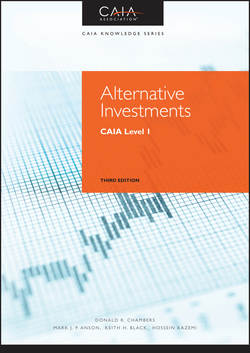Читать книгу Alternative Investments - Hossein Kazemi - Страница 55
На сайте Литреса книга снята с продажи.
PART One
Introduction to Alternative Investments
CHAPTER 3
Quantitative Foundations
3.5 Distribution of Cash Waterfall
3.5.6 Hard Hurdle Rates
ОглавлениеA hurdle rate, or preferred return, specifies that a fund manager cannot receive a share in the distributions until the limited partners have received aggregate distributions equal to the sum of their capital contributions as well as a specified return, known as the hurdle rate. In other words, a hurdle rate specifies a return level that LPs must receive before GPs begin to receive incentive fees. This section details hurdle rates and discusses a hard hurdle rate. A hard hurdle rate limits incentive fees to profits in excess of the hurdle rate.
APPLICATION 3.5.6A
Consider a $10 million fund with 20 % incentive fees that lasts a single year and earns a $2 million profit. Ignoring a hurdle rate, the fund manager would receive $400,000, which is 20 % of $2 million. But with a hard hurdle rate of 10 %, the fund manager receives the 20 % incentive fees only on profits in excess of the 10 % return, meaning $200,000. The first $1 million of profit goes directly to the limited partners. The fund manager collects an incentive fee only on profits in excess of the $1 million, which is the profit necessary to bring the limited partners' return up to the hurdle rate. Thus, the manager receives an incentive fee of $200,000.
The sequence of cash distributions with a hard hurdle rate is as follows:
■ Capital is returned to the limited partners until their investment has been repaid.
■ Profits are distributed only to the limited partners until the hurdle rate is reached.
■ Additional profits are split such that the fund manager receives an incentive fee only on the profits in excess of the hurdle rate.
